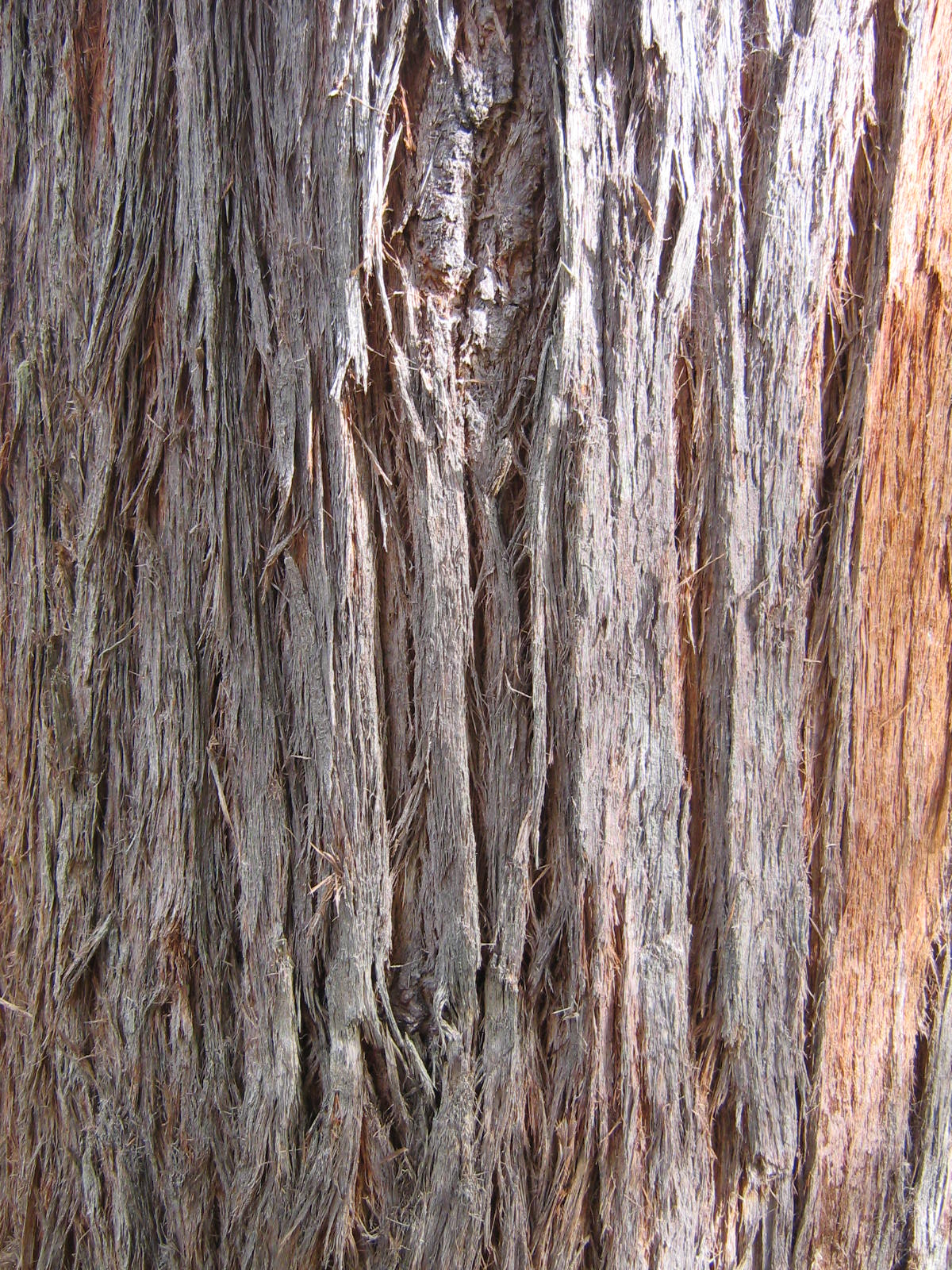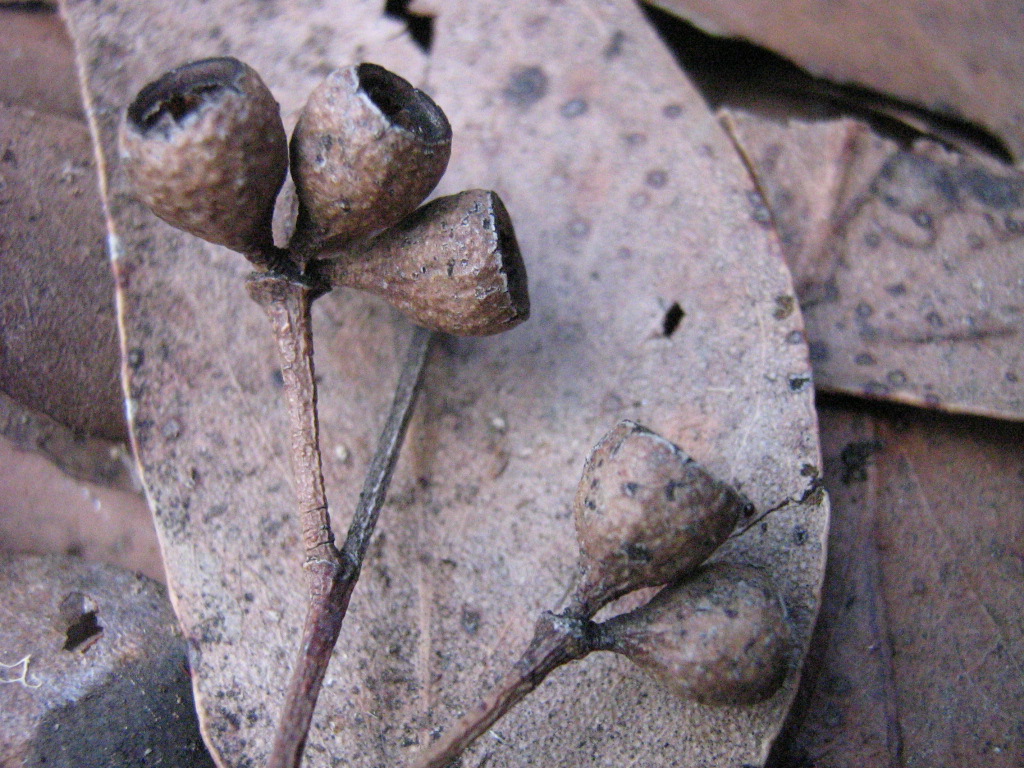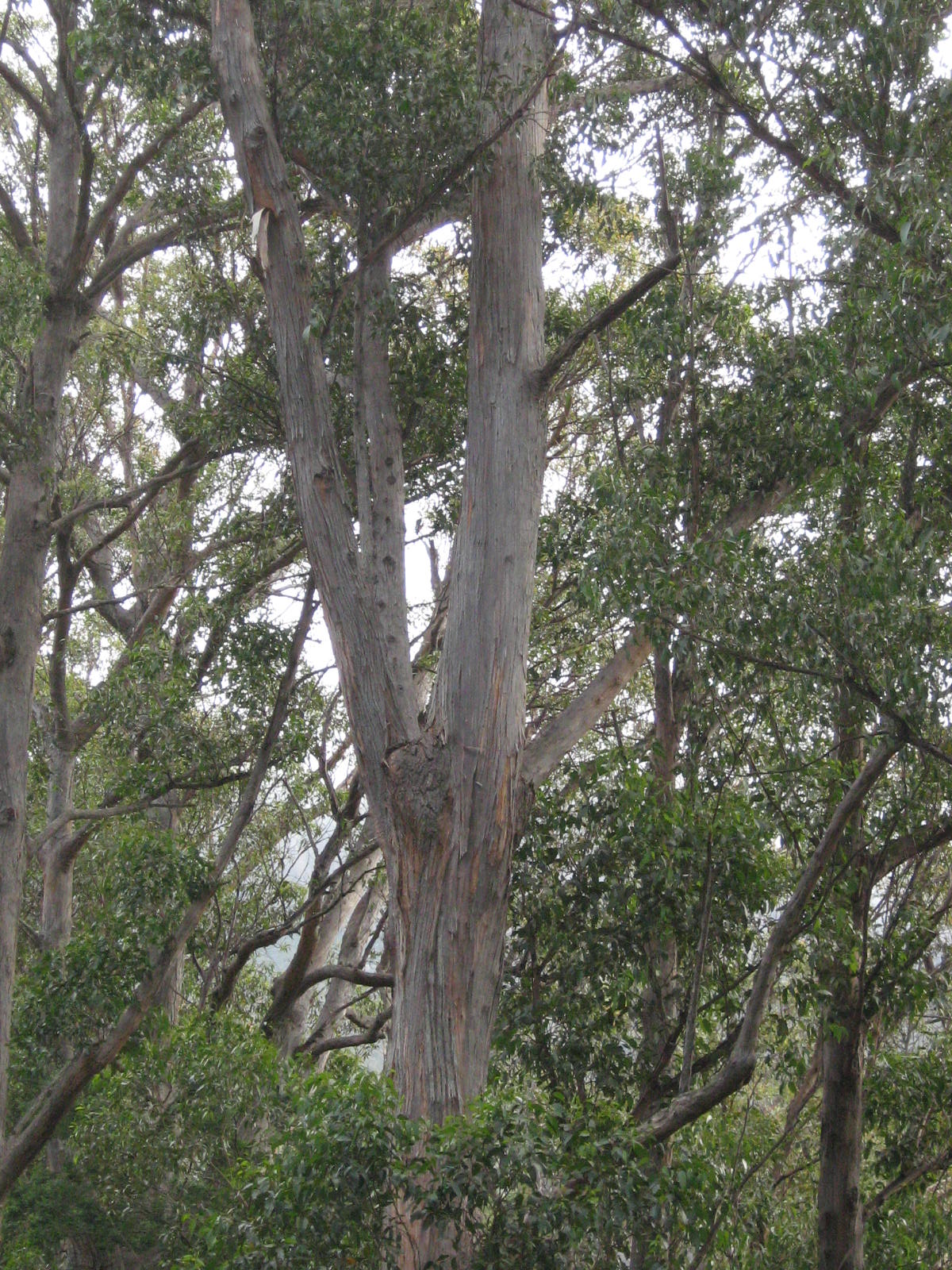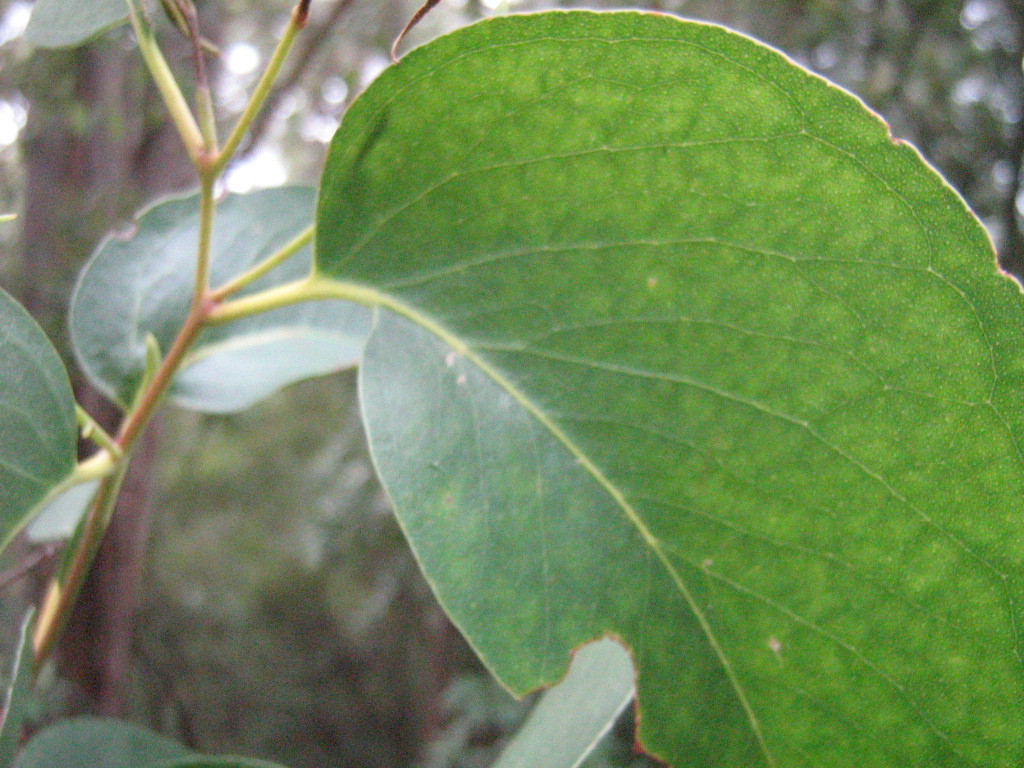Scientific Name: Eucalyptus obliqua
Common Name: stringybark
Family Classification (Clade): Eudicots
Family: Myrtaceae
Form Description: Tall straight tree with a dense crown. Leaves: Juvenile – asymmetrical, stalked, ovate, oblique, tapering suddenly to pointy tip, green, to 190mm long. Adult – asymmetrical, lanceolate, oblique, dark green to 130mm long, glossy and leathery. Concolorous.
Height (m): 5 – 90
Flowers: Umbels with 7-16 flowers, profuse, white-cream.
Fruit: Woody capsules – barrel-shaped, with a sunken disc.
Municipality
Plant Communities
Habitat Notes
Grows on deep soils with good drainage from sea level to about 600m. Is absent from poorly drained sites, dry sites and highly infertile soils. Generally frost and drought resistant, but this is strongly related to provenance.
Site Tolerance
Dry, Exposed, Moist, Rocky, Windy
Soil Tolerance
Clay, Fertile, Loam, Nutrient-poor, Sandy, Well-drained
General Notes
Useful in providing high-level shelter (up to 50m) in windbreaks. Its dense foliage provides useful shade. Bee attracting. Large quantities of cream-coloured pollen is yielded producing a mild flavoured honey. Bird attracting. Nectar feeding birds are attracted to the blossom and rosellas are attracted to the capsules and seed. The blossom provides food (pollen) for many native insects, which in turn attract insect-eating birds. The seed and fruit are eaten by some native birds. High flammability. One of the most important hardwoods; used for a wide range of construction and manufacturing purposes. Also a possible hardwood pulp species. The leaves are used for dyes. Koori (mainland) use: fibre from inner bark used to make coarse string for bags and fishing nets. Outer bark for tinder.
Propagation Calendar
-
Flowering Month
Jan Feb Mar Apr May Jun Jul Aug Sep Oct Nov Dec -
Seed Collecting Month
Jan Feb Mar Apr May Jun Jul Aug Sep Oct Nov Dec -
Sowing Month
Jan Feb Mar Apr May Jun Jul Aug Sep Oct Nov Dec -
Cutting Month
Jan Feb Mar Apr May Jun Jul Aug Sep Oct Nov Dec
Propagation Method
Seed Information
Seed Collection
Collect capsules and store in paper bags until valves open to release seed. Seed can be collected at most times of the year as seed-bearing capsules are retained on the tree for a long time. Separate seed by sieving.
Seed Treatment Method
Standard Scatter seed thinly on to damp potting mix. Hold seed in place by covering with more potting mix to approximately the depth of the seed size.
Seed Storage Life
More than 10 years dry stored in refrigerator at 3-5°C
Seed Treatment Notes
Suitable for direct seeding. Otherwise seed germinates best at 21°C. Seedling may not survive in a sterile potting mix. Problems can be overcome by adding local soil or leaf litter. Smoke treatment may improve germination. 6-8 weeks to pricking out.
Germination Time
2-4 weeks



